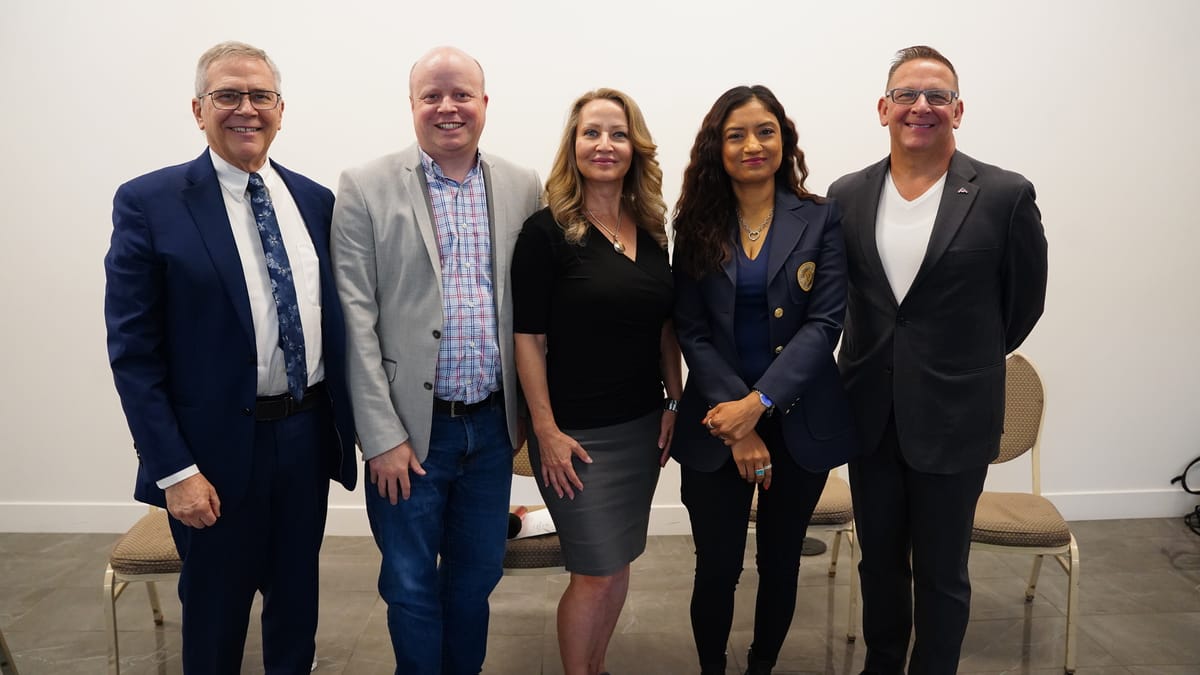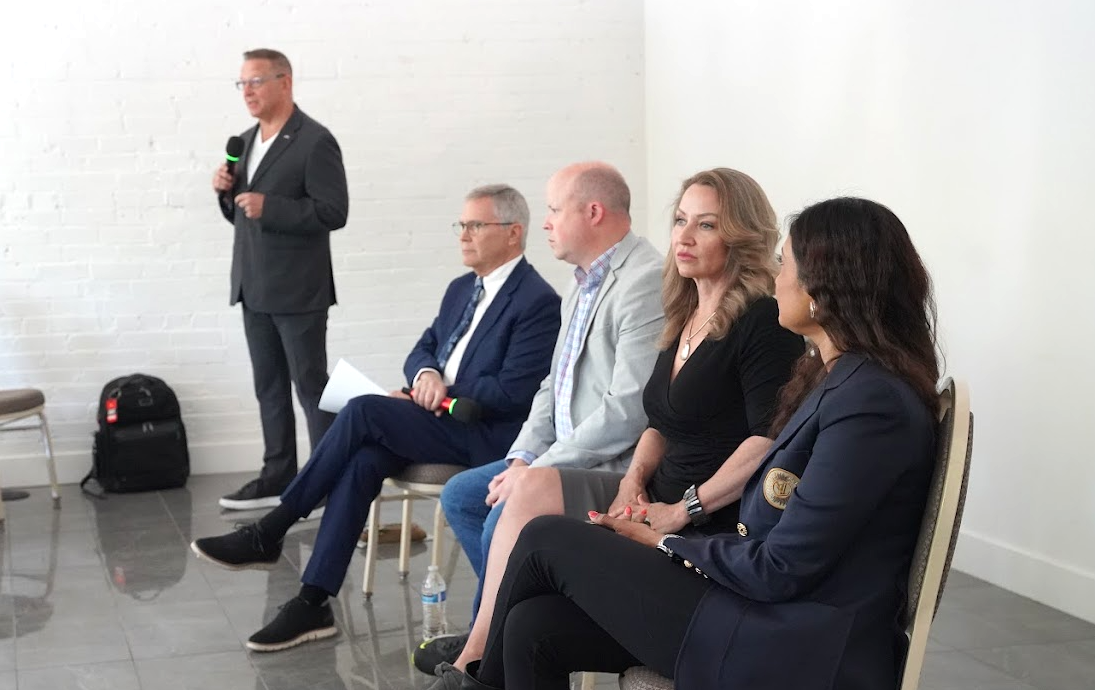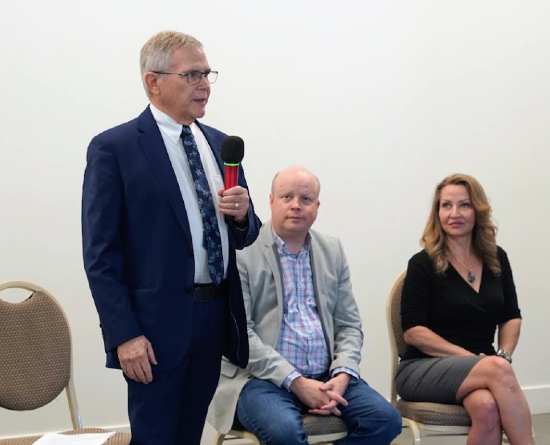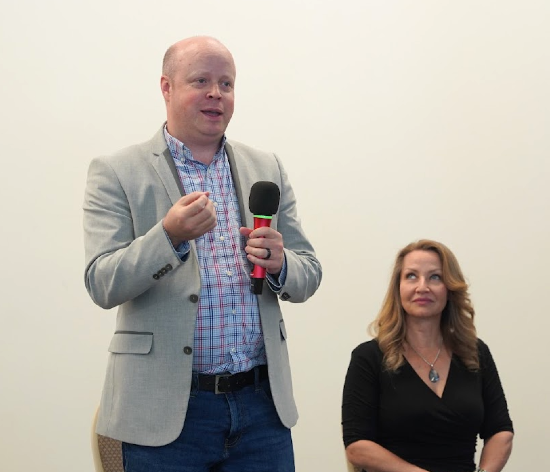

Salt Lake City, Utah - June 28, 2025

On June 26, KolobX hosted a high-level briefing titled Utah’s Strategic Imperative, convening a select group of leaders in advanced energy systems, national security, and economic development. Held at Velvet’s headquarters in downtown Salt Lake City, the event was moderated by retired U.S. Air Force Brigadier General Max Stitzer. Panel discussions focused on advanced geothermal and hydrogen technologies, the role of infrastructure in national security, and how energy deployment can drive long-term economic growth.
KolobX—a global strategic intelligence and integration firm based in Lehi, Utah—convened the event as part of its mission to align industry, policy, capital, and technology to accelerate the deployment of critical infrastructure. Co-founded by Jakob Noble and Katherine Gottfredson, KolobX operates as a deployment accelerator, specializing in real-world deployment planning, legislative and regulatory roadmapping for municipalities and states, and strategies for energy and critical mineral readiness tied to national security. The firm also develops AI-driven intelligence products and is affiliated with Numbrd, a Lehi-based social networking platform.
By hosting Utah’s Strategic Imperative, KolobX advanced its vision for energy innovation and economic growth—one that balances strategic advantage with strategic responsibility to support both regional development and global resilience.

Against this backdrop, panelists addressed Utah’s energy infrastructure challenges and opportunities head-on. Stephanie Russell, Director of Economic Development and Government Relations for Weber County, said bluntly, "Utah’s biggest challenge is infrastructure. We don’t have it. It’s a huge problem." From a governance standpoint, she added, "The state of Utah is not set up in a way that their governing policies allow infrastructure to be developed in a realistic, timely fashion." She warned that "we have an energy crisis in this state right now because of the way Utah has set up their legislative, statutory means of dispersing energy. They’re working on it… but this is literally the starting point."

This infrastructure gap places enormous pressure on innovators and businesses racing to deploy next-generation technologies, especially in data-heavy sectors like AI. Jim Farrell, CEO of w2e Technology, a South Jordan-based cleantech firm converting waste streams into energy without combustion—said, "Last week, I was at an AI convention hosted by Nvidia. The conversation was consistent: the infrastructure isn’t there. The only way hyperscale data centers can operate is with on-site power."
Farrell added, "Solar power is a problem because you need tens of thousands of acres to generate the necessary power, and solar doesn’t work well overnight. Data centers can lose five million dollars per minute if they go offline. Redundancy and uptime aren’t negotiable."
His company focuses on modular, emission-free distributed power blocks scalable from one megawatt to gigawatts, designed to tap underutilized substations across Utah. "We produce power without combustion or emissions," he explained. "We operate at about 650 degrees below temperatures that create harmful pollutants. But people fear what they don’t understand."

Optimism came from Mark Polsen, CEO of Salt Lake City-based Altris Energy LLC, who noted, "Utah has done tremendously well economically. It’s poised to be a major leader in next-generation infrastructure, just like it was with Silicon Slopes." Still, he emphasized, "If any technologies want to enter Utah’s economic arena, legislation has to change. That’s the biggest barrier."
Polsen pointed to Utah’s strength in technology transfer despite its modest population, saying, "Utah represents just 1% of the national population, yet we’re top-tier when it comes to tech transfer from institutions like BYU and the University of Utah."
Farrell also spoke about the importance of financing structures: "We partner with Citibank. They have an energy transition fund that is a perpetual fund of $100 billion to fund projects like we are talking about today." He added, "When we talk to municipalities or states, we don’t want their money—we need a power purchase agreement. That unlocks the entire project." He stressed the need for competition: "The public monopoly was created to serve the people, but today they operate for shareholders. That needs to change so new technologies can compete."
One of the most salient points on barriers to innovation came from Dr. Dolly Chitta, an AI and energy systems expert with a background in chemical engineering and materials science. She emphasized that the greatest challenge in advancing clean energy technologies is bridging the “tech-to-market” gap—particularly between Technology Readiness Levels (TRLs) 3 and 5. “This is where promising technologies fail to transition from pilot concepts to scalable, commercially viable solutions,” she said.

Chitta explained, "People know how to do fundamental research, but when they’re not identifying the right problem to bring back from market into technology, and then develop it with dependable intellectual property, the value gets lost." She emphasized the need for a feedback loop between market demands and technical development.
The path forward, panelists agreed, demands collaboration. As Russell put it, "Utah is a blank canvas, and when you have a blank canvas and you're creative, you can move things forward. But we have to do it collaboratively. We can't do it in a vacuum. We can't do it silo. We have to partner up."
In convening this dialogue, KolobX framed the urgency and complexity of Utah’s infrastructure challenge. It intends to continue to provide a forum where private innovators, government officials, and national security leaders can align around actionable deployment strategies.
The stakes couldn’t be higher. As one speaker put it, "Utah doesn’t just need one gigawatt of new power—it needs ten." With streamlined legislation and regulatory processes, Farrell concluded, "we could reduce build time from 7–10 years to 24–36 months. That would unlock billions in business and position Utah as a global AI infrastructure hub. Without it, the opportunity goes elsewhere."


